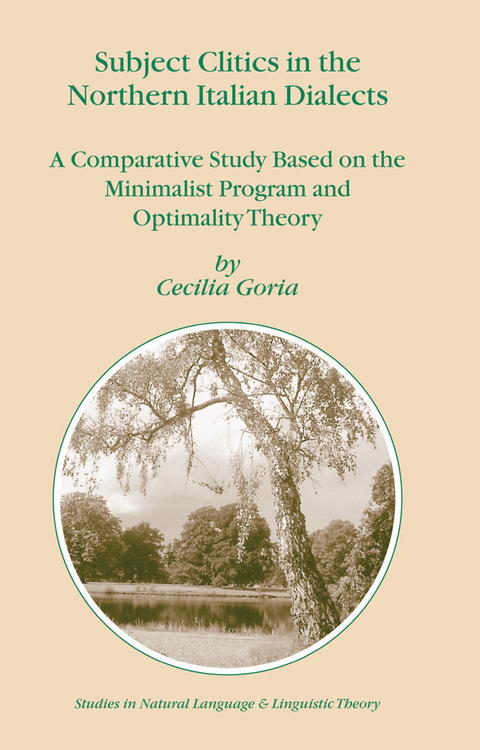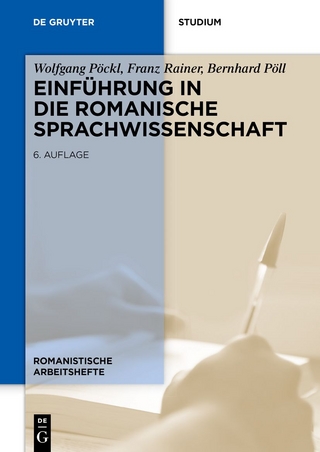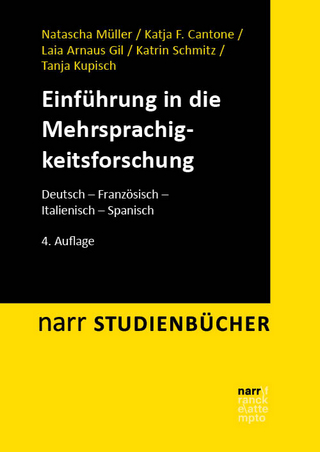
Subject Clitics in the Northern Italian Dialects
Springer-Verlag New York Inc.
978-1-4020-2737-6 (ISBN)
1. 0 INTRODUCTION This book provides an encompassing analysis of Subject Clitics (SCLs) by giving a detailed description of these elements in two varieties of Piedmontese, a Northern Italian Dialect: Astigiano and Turinese spoken in the areas of Asti and Turin respectively. It accounts for the structural position and function of these elements inside the computational system and for their morphological and distributional properties. It also provides an empirical and theoretical comparison between Piedmontese SCLs and SCLs in other Northern Italian Dialects (NIDs). of SCLs types in the NIDs have been regarded as Since the 1980s, the majority elements of agreement, in that they contribute to the realisation of subject verb agreement by expressing features of the subject similar, in a way, to verbal inflection. Nonetheless, SCLs are not to be assimilated to verbal affixes as they exhibit different properties. Most distinctively, they can be separated from the verb by other clitic elements and, in the case of the varieties considered here, SCLs are optional in all contexts and may be omitted in coordination. A more refined identification of SCLs separates SCLs which encode agreement features from those which do not and are related to pragmatic factors, as originally observed by Beninca (1994) with respect to the clitic a in Paduano The different morphological and syntactic properties that characterise SCLs across the NIDs have justified numerous accounts which regard them as head of their own projection.
1 Introduction.- 1.0 Introduction.- 2.0 The Dialect.- 3.0 The object of inquiry.- 4.0 Objectives and proposals.- 5.0 Theoretical background.- 5.1 The Minimalist Program.- 5.2 Optimality Theory.- 6.0 This study: questions and answers.- 6.1 What is the empirical and theoretical significance of working with SCLs in Piedmontese?.- 6.2 Why is a twofold approach adopted and what are the benefits of this choice?.- 6.3 What are the boundaries of each approach in the analysis proposed in this book?.- 7.0 The Data.- 8.0 Organisation.- Notes.- 2 The Data.- 1.0 Introduction.- 2.0 Turinese.- 2.1 Turinese SCLs and types of subjects and verbs.- 2.2 Linear order between SCLs and other proclitics.- 2.3 SCLs and negative markers.- 2.4 Direct interrogatives.- 2.5 SCLs in subordinate clauses.- 2.6 SCLs in coordinated clauses.- 2.7 SCL: Non-finite forms and true imperatives.- 2.8 Optionality.- 3.0 Astigiano.- Notes.- 3 Optimal Agreement The position and the function of SCLs.- 1.0 Introduction.- 2.0 The proposal.- 3.0 Pre verbal subjects.- 3.1 Arguments against the left dislocation analysis of unmarked preverbal subjects in Italian and the NIDs.- 3.2 Subject-in-CP analysis (Poletto 2000b).- 3.3 Subject positions below the CP boundary: more evidence for SCLs in T.- 4.0 The Extended Projection Principle.- 4.1 SCLs and the EPP.- 5.0 A multi-layered model for SCLs: an overview.- 5.1 Four types of SCLs: an outline of Poletto’s Agreement Field.- 5.2 The Agreement Field.- 5.3 Reviewing the Agreement Field: Turinese and Astigiano.- 6.0 Conclusion.- Notes.- Chapter4 Optimal Agreement The morphology and the distribution of SCLs.- 1.0 Introduction.- 2.0 Optimal Agreement.- 3.0 The feature specification of Piedmontese SCLs.- 3.1 The Basic System and the Deictic Systems.- 3.2 Full and PersonOptionality.- 3.3 SCLs in coordination.- 4.0 Summary and conclusion.- Notes.- 5 Beyond Piedmontese.- 1.0 Introduction.- 2.0 Beyond Piedmontese and the minimalist component of Optimal Agreement.- 2.1 Negation.- 3.0 A common property across the NIDs and SCL types.- 3.1 Imperatives.- 3.2 Non-finite verb forms.- 4.0 Beyond Piedmontese and the OT component of Optimal Agreement.- 4.1 Renzi and Vanelli’s (1983) SCL Systems and Florentine.- 5.0 Illegitimate candidates.- 5.1 Candidates that do not encode [±add,sg].- 5.2 Two feature combination constraints.- 5.3 An alternative analysis: [?] Dominance Scale.- 6.0 Conclusion.- Notes.- 6 Beyond SCLs: Piedmontese interrogatives.- 1.0 Introduction.- 2.0 Interrogative inversion and ICLs.- 2.1 ICLs as interrogative morphology.- 2.2 Agreement constraints and ICLs.- 3.0 A unitary account of Piedmontese interrogation strategies.- 3.1 Wh+che questions.- 3.2 Theproposal.- 4.0 Summary.- 5.0 Interrogativity and the Agreement Field (Poletto 2000b).- 5.1 Piedmontese.- 6.0 Conclusion.- Notes.- 7 Concluding remarks.- 1.0 A summary of Optimal Agreement and its achievements.- 2.0 Contribution to structure-minimality.- 3.0 Structure-minimality vs. amyriad of projections.- 4.0 Topics for future study.- 4.1 A gradual notion of Finiteness: what do SCLs teil us?.- 4.2 OT in narrow syntax.- Notes.- References.
| Erscheint lt. Verlag | 13.10.2004 |
|---|---|
| Reihe/Serie | Studies in Natural Language and Linguistic Theory ; 60 |
| Zusatzinfo | X, 288 p. |
| Verlagsort | New York, NY |
| Sprache | englisch |
| Maße | 155 x 235 mm |
| Themenwelt | Geisteswissenschaften ► Sprach- / Literaturwissenschaft ► Romanistik |
| Geisteswissenschaften ► Sprach- / Literaturwissenschaft ► Sprachwissenschaft | |
| ISBN-10 | 1-4020-2737-0 / 1402027370 |
| ISBN-13 | 978-1-4020-2737-6 / 9781402027376 |
| Zustand | Neuware |
| Haben Sie eine Frage zum Produkt? |
aus dem Bereich


